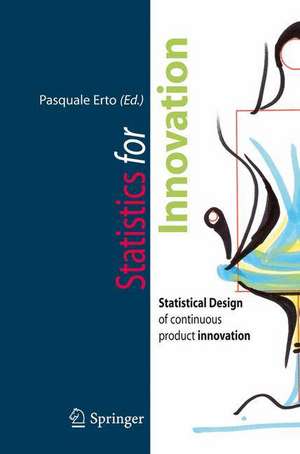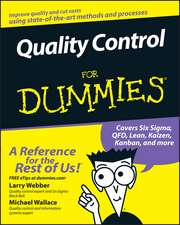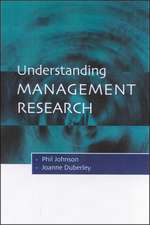Statistics for Innovation: Statistical Design of "Continuous" Product Innovation
Editat de Pasquale Ertoen Limba Engleză Paperback – 26 noi 2008
Preț: 392.60 lei
Nou
Puncte Express: 589
Preț estimativ în valută:
75.13€ • 77.62$ • 62.53£
75.13€ • 77.62$ • 62.53£
Carte tipărită la comandă
Livrare economică 25 martie-08 aprilie
Preluare comenzi: 021 569.72.76
Specificații
ISBN-13: 9788847008144
ISBN-10: 884700814X
Pagini: 284
Ilustrații: XVI, 264 p. 10 illus.
Dimensiuni: 155 x 235 x 18 mm
Greutate: 0.52 kg
Ediția:2009
Editura: Springer
Colecția Springer
Locul publicării:Milano, Italy
ISBN-10: 884700814X
Pagini: 284
Ilustrații: XVI, 264 p. 10 illus.
Dimensiuni: 155 x 235 x 18 mm
Greutate: 0.52 kg
Ediția:2009
Editura: Springer
Colecția Springer
Locul publicării:Milano, Italy
Public țintă
Professional/practitionerCuprins
Design for Innovation.- Analysis of User Needs for the Redesign of a Postural Seat System.- Statistical Design for Innovation in Virtual Reality.- Robust Ergonomic Virtual Design.- Computer Simulations for the Optimization of Technological Processes.- Technological Process Innovation.- Design for Computer Experiments: Comparing and Generating Designs in Kriging Models.- New Sampling Procedures in Coordinate Metrology Based on Kriging-Based Adaptive Designs.- Product and Process Innovation by Integrating Physical and Simulation Experiments.- Continuous Innovation of the Quality Control of Remote Sensing Data for Territory Management.- An Innovative Online Diagnostic Tool for a Distributed Spatial Coordinate Measuring System.- Technological Process Innovation via Engineering and Statistical Knowledge Integration.- Innovation of Lifecycle Management.- Bayesian Reliability Inference on Innovated Automotive Components.- Stochastic Processes for Modeling the Wear of Marine Engine Cylinder Liners.- Research and Innovation Management.- A New Control Chart Achieved via Innovation Process Approach.- A Critical Review and Further Advances in Innovation Growth Models.
Textul de pe ultima copertă
The objective of this book is to illustrate statistical methodologies that incorporate physical and numerical experiments and that allow one to schedule and plan technological innovation, similar to any other productive activity. This methodology should be implemented through a structured procedure aimed at reducing the high rate of commercial failure characterizing actual innovation processes. In fact, it is well known that:
i) The rate of commercial failure of a innovative idea is very high (90–94 out of 100 proposals for innovation undergo substantial failure in the EU and in the USA).
ii) Low reliability in the long run and sensitivity to usage conditions are the factors that determine the failure of the innovation.
The definition of an iterative design activity is an objective that can be reached by subdividing the complex innovation process into "short" steps in experimental statistics research. The approach adopted to analyze customer needs and the tools used to reduce unwanted variability form the framework for the statistical design of "continuous" product innovation.
Starting from the observation that product innovation is achieved when a "quality" that is able to satisfy a new customer need is conferred on the product and survives over real operating conditions and time, this book illustrates the operative steps required to perform the whole innovation process iteratively.
i) The rate of commercial failure of a innovative idea is very high (90–94 out of 100 proposals for innovation undergo substantial failure in the EU and in the USA).
ii) Low reliability in the long run and sensitivity to usage conditions are the factors that determine the failure of the innovation.
The definition of an iterative design activity is an objective that can be reached by subdividing the complex innovation process into "short" steps in experimental statistics research. The approach adopted to analyze customer needs and the tools used to reduce unwanted variability form the framework for the statistical design of "continuous" product innovation.
Starting from the observation that product innovation is achieved when a "quality" that is able to satisfy a new customer need is conferred on the product and survives over real operating conditions and time, this book illustrates the operative steps required to perform the whole innovation process iteratively.














